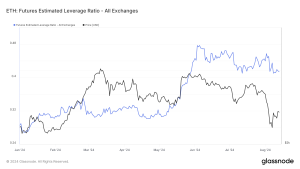
SPONSORED POST*
There are thousands of cryptocurrency platforms that have emerged after bitcoin. Most aim to improve the blockchain network to facilitate financial transactions more efficiently and securely. But their rise in the industry has also faced major issues that challenged their growth.
One of the notable alternatives that came out in recent years is ICON. This one existed to facilitate the interactions of independent blockchains within a community of users and governed by a specific system.
It has good goals, yet like other cryptocurrencies, the platform has been taking an uphill battle to establish a brand in the industry.
ICON has its own platform, unlike other cryptocurrencies such as Bitcoin and Ethereum, which have their respective communities, including banks, governments, hospitals, businesses, and schools. Still, it is primarily supported through a cryptocurrency token called ICX.
This project was established in 2017. Its goal is to facilitate a platform where entities from various industries, such as financial, insurance, security, educational, commerce, and health care, can interact and transact on a single network.
Read the following facts to know more about this development and how it changes some things in the cryptocurrency world.
To explore ideal investment opportunities, make sure you only opt for platforms with a reliable history and which come recommended by crypto experts, such as eToro or Bitcoin Profit.
Understanding ICON in a Broader Context

There is an interesting story behind the existence of the ICON project. Aside from the fact that it aims to provide a better venue for digital traders and investors, it also wants a platform that works like real-world economies.
The structure of businesses, government agencies, and nonprofit organisations are aimed at being incorporated into the system but remaining distinct from common economic actors. It also has a blockchain technology and cryptocurrency, allowing participants in a decentralised system to converge at a central point, thereby creating an interconnected blockchain network.
The ICON project attempts to create a connection between different blockchains, which was just a dream in the past. It also allows individual communities to retain control of their policies, unlike other centralised payment systems requiring users to adhere to specific rules and guidelines.
Hence, potential barriers to adoption could be reduced. Ideally, the developers behind the platform want to establish a digital nation wherein various economic actors can issue and control their own forms of value under the chosen rule systems.
What Goals is ICON Trying to Achieve?
Having a greater network composed of individual networks that are powered by cryptocurrencies is the main goal of ICON. This means blockchains participating in the project can exchange currencies through the platform’s decentralised exchange (DEX). This project has five major components, including the ICON Republic, ICON communities, community nodes, community representatives, and citizen nodes.
The ICON communities are a network of nodes within a single governance system, but they vary in decision-making approaches. However, they can operate with their respective governance structure, numbers of nodes, and characteristics.
On the other hand, the ICON Republic is the governing structure of the network that can function as the decision committee for the blockchain’s operations. The votes of community representatives essentially determine this organisation, but their actions do not necessarily determine the governance of other communities.
Nexus is the blockchain behind the ICON Republic and is powered by the loop chain, which connects communities within the network. When grouped, the communities are called consortiums, and they can determine a set of rules to allow various blockchains to function as one. Such rules that govern how independent blockchains interact with the ICON Republic’s blockchain are called Blockchain Transmission Protocol.
Criticisms of the ICON Project
Although the goals that ICON is trying to achieve are ideal, the project confronts issues in meeting its expectations. Many investors are used to traditional centralised cryptocurrency exchanges, which discourage target users from making the desired shift. Such exchanges remain an integral part of the cryptocurrency market despite the decentralised system behind cryptocurrencies.
In reality, investors would only purchase the cryptocurrencies that can be purchased through their favourite exchanges. Better options such as ICON may be disregarded because they are yet to establish their brand and reputation.
Consequently, popular exchanges may also decide not to offer the platform to their customers. Another challenge for this startup is the tight competition among different cryptocurrencies, and newer alternatives may be the least considered.
Risk Note:
Newer and seemingly better cryptocurrency platforms are coming out in the market. The typical tendency among most investors is to rely upon those who have already established their names, like bitcoin.
Maybe this is a safer method, but trying alternatives may prove advantageous and profitable. But precautions should still be observed given the inherent volatility and unpredictability of the network.
*This article has been paid. The Cryptonomist didn’t write the article nor has tested the platform.
The post What is ICON and Its Role in Cryptocurrency Network? appeared first on The Cryptonomist.














